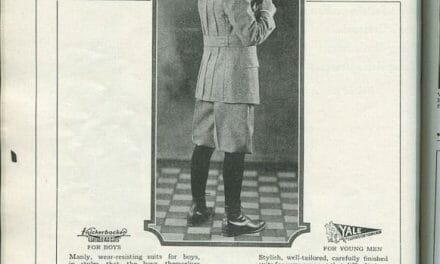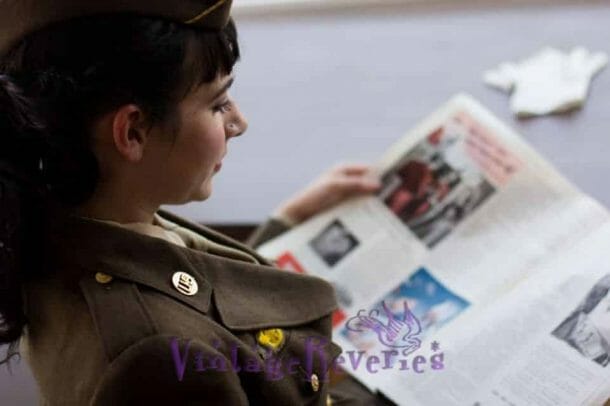
Winter 1892 Ladies Sleeve, Skirt, Bustle, and Skirt Train Fashions

As I continue working through digitizing and scanning this fascinating 1890s fashion magazine, I’m thrilled to share some intricately detailed illustrations and descriptions from the winter of 1892. These insights, taken from The Delineator magazine published in January of that year, provide an incredible window into the elegance, artistry, and fashion engineering of that time period. The carefully styled garments emphasized women’s silhouettes with bold, dramatic shapes, and no expense of fabric or flair was spared. Here are the highlights for winter fashion in 1892, along with some historical context.
The Amy Robsart Sleeve: A Design of Drama and Elegance
One of the standout trends was the Amy Robsart Sleeve. This sleeve style, named after a tragic historical figure from Tudor England and indicative of the late 19th-century Victorian fascination with romanticism, featured exuberant puffs at the very top of the shoulder. This “leg-of-mutton” silhouette was both imposing and fashionable, adding volume and grace to the upper body. The sleeves made a bold statement about how women were expected to present themselves: delicate yet strong, demure yet eye-catching.
The exaggerated puff was often “strapped,” creating a slightly structured look that helped balance the other sweeping and voluminous designs of skirts and bustles. The leg-of-mutton sleeve would eventually become one of the defining features of 1890s fashion, symbolizing the transition toward a stronger female form in fashion as Victorian styles evolved.
Front and Back Basques with Leg-of-Mutton Sleeves
The basque, another essential garment of this decade, typically consisted of a jacket-like bodice, fitted tightly to the torso to create an hourglass silhouette. Either worn over a shirtwaist or as one cohesive piece, basques from the winter of 1892 often featured rich fabrics and decorative elements. These garments were paired with leg-of-mutton sleeves, which created a powerful visual effect by emphasizing the contrasts between a petite, cinched waist and broad, sculpted shoulders. Such attention to structure highlights how women’s fashion of the late 19th century prioritized an overtly architectural, almost sculptural, sense of design.
Front and back views of these basques, as highlighted in The Delineator’s illustrations, show how fabric was skillfully employed to enhance the feminine silhouette. Typically, these basques were paired with elaborate skirts or bustles that added drama and movement to the ensemble.
Cuff Fashions: A Fine Finish
No detail was too small during this era, and cuffs were no exception. The magazine provided examples of ladies’ cuff fashions, demonstrating how even the smallest elements of a garment were meticulously embellished. Lace, ribbon, embroidery, and precise pleating were commonly used to give a polished, luxurious touch. Cuffs were designed to match the bodice or sleeve style, acting as a finishing flourish that spoke to a woman’s attention to detail and her mastery of presentation.
Skirts with Trains: A Symmetrical Grandeur
The grandeur of winter 1892 was perhaps best reflected in the skirts, which featured generous trains and ornate construction. Some highlights include the magnificent tiered walking skirt with a train, which undoubtedly must have presented quite the obstacle to ladies navigating cobblestone streets and snowy pathways! One can also imagine the sophistication and impracticality of what the magazine called the bell skirt, which offered the slight train variation that swept the ground gracefully. Notably, these skirts were often “perforated for round length,” allowing for both style and practical adjustment depending on the occasion or activity.
Another exceptional design was a skirt with a fan back, which also featured a slight train. This particular piece is compelling not just for its visual beauty but also for the staggering amount of fabric required. For a woman of “medium size” (which, by modern standards, would probably be considered a small), this skirt needed 7 yards and 1/8 inch of 22-inch wide fabric—an astonishing 21 feet of material! The sheer volume of fabric highlights both the opulence of the time and the painstaking labor that went into constructing Victorian wardrobes.
Accessories and Accompaniments to Complete the Look
In addition to these main components, ladies of the winter 1892 season added accessories to enhance their style further. Highlights include the fancy muff, a practical yet luxurious hand warmer often adorned with fur, beads, or other embellishments—a necessary piece to brace against winter chills.
There’s also mention of the umbrella skirt, which was a slightly less cumbersome alternative to the bell skirt but still retained that distinctly Victorian ability to merge practicality (at least in theory) with elegance. By layering petticoats and underskirts, the movement of these skirts created a floating, ethereal effect, which perfectly encapsulated the aesthetic ideals of the late 1800s.
Fashion as a Statement: Historical Context
The fashions of winter 1892 reflect more than just aesthetic trends—they also spoke to the cultural and societal shifts of the time. As industrialization and mass production became more common, fabrics and trims were more accessible, allowing middle-class women to participate in high fashion, albeit often with cheaper materials. However, wealthier women continued to commission bespoke garments, often handmade by skilled seamstresses, demonstrating their class and status.
The growing women’s suffrage movement during the 1890s also began influencing styles subtly. While these ornate, restrictive garments symbolized the traditional feminine ideal, the leg-of-mutton sleeves and increasing bustle sizes added an almost commanding presence to women’s wardrobes—a subtle nod to the empowerment quietly brewing in Victorian society.
Conclusion
The winter fashions of 1892, as captured in The Delineator, are a testament to the creativity, craftsmanship, and cultural significance of Victorian clothing. From the Amy Robsart sleeve to the tiered skirts with their dramatic trains, these garments tell the story not only of an era’s aesthetic but also its values and aspirations. Fashion of this time wasn’t just about style—it was a living art form that reflected the complexity and formality of a society on the cusp of modernity.
These scans and digitized designs give us a remarkable opportunity to study and appreciate the thought and care behind clothing from over a century ago. If anything, they remind us of the timeless interplay of culture, fashion, and identity.




















You must be logged in to post a comment.